New Molecules & Stem Cell Retinoid Screen
Sean Raspet
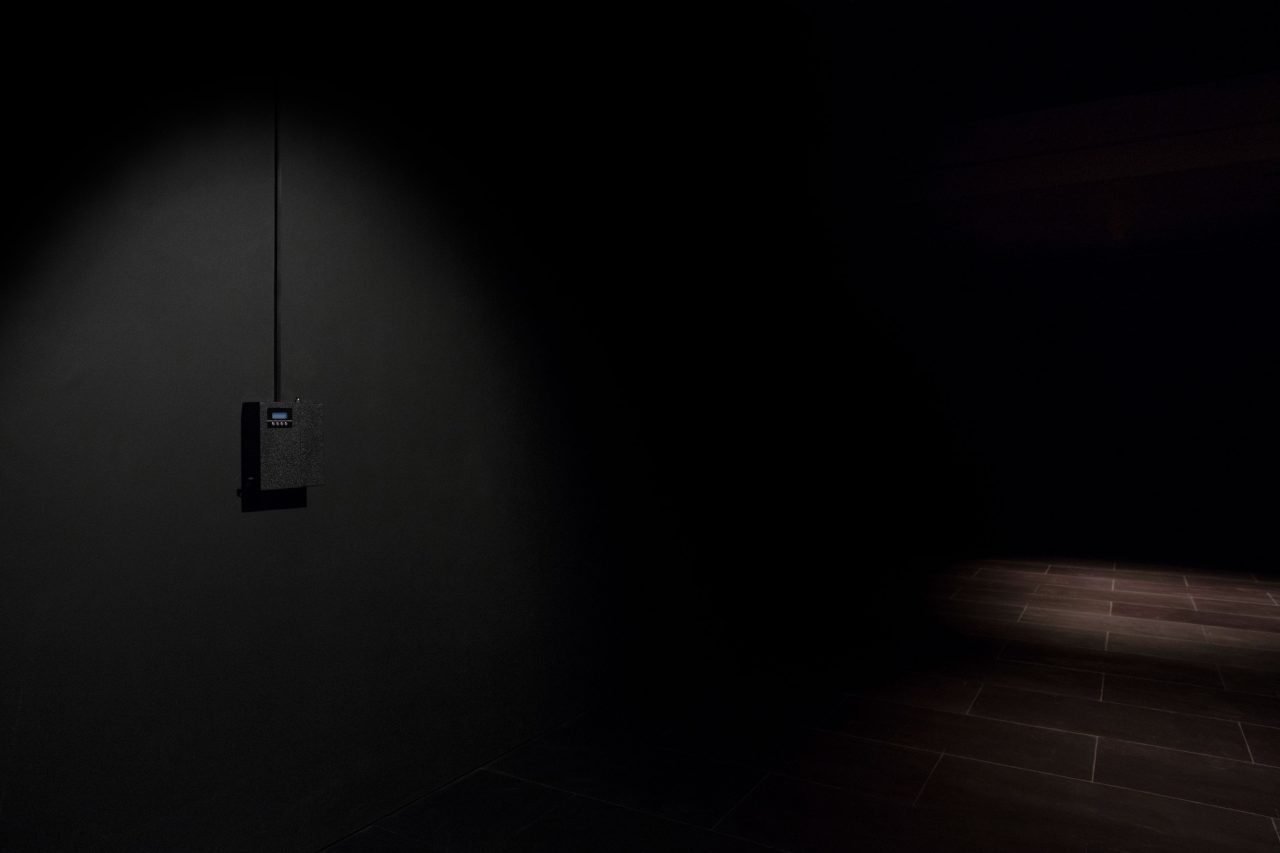
Fructaplex© (2-(3,3-dvimethylcyclohexyl)-2,5,5-trimethyl-1,3-dioxane), 2018 – 2019
Image courtesy of the artist and Empty Gallery.
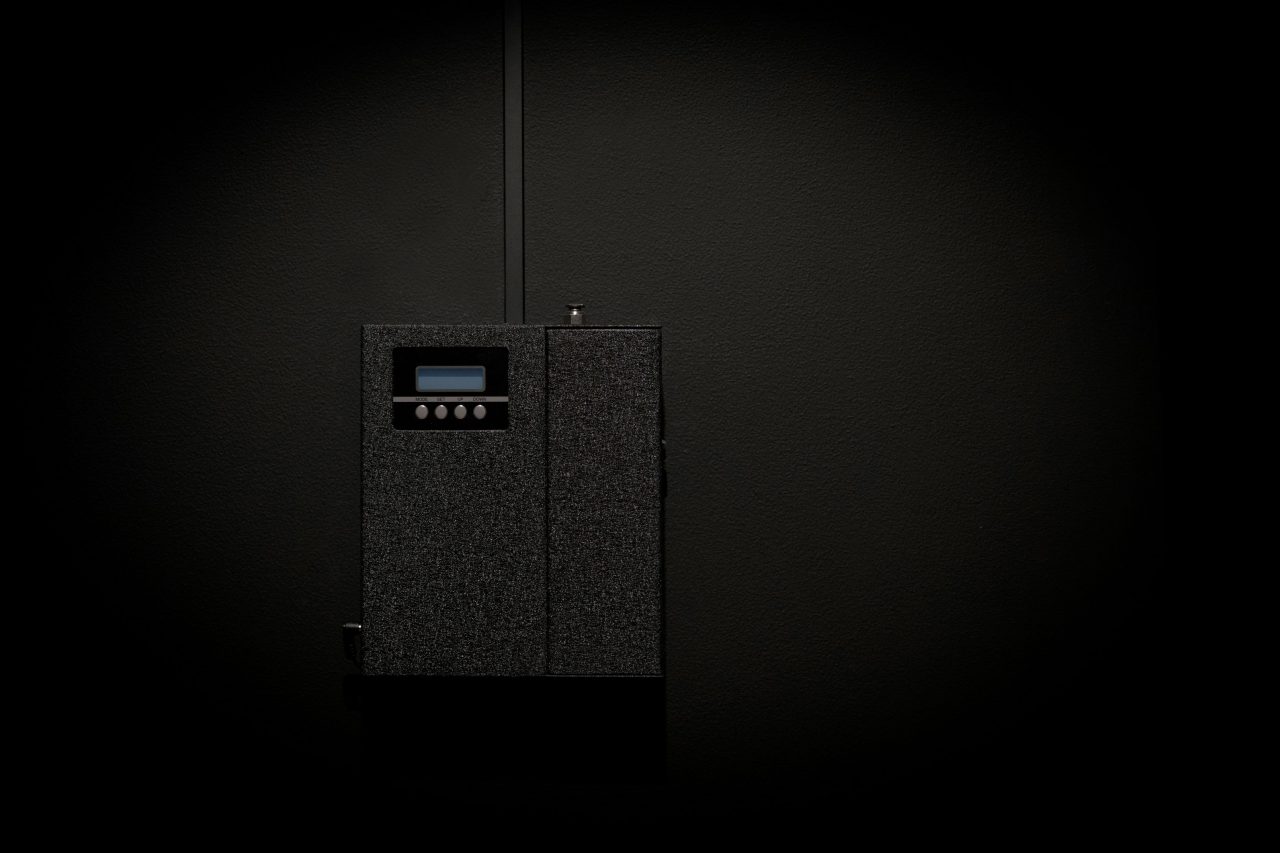
Fructaplex© (2-(3,3-dvimethylcyclohexyl)-2,5,5-trimethyl-1,3-dioxane), 2018 – 2019
Image courtesy of the artist and Empty Gallery.
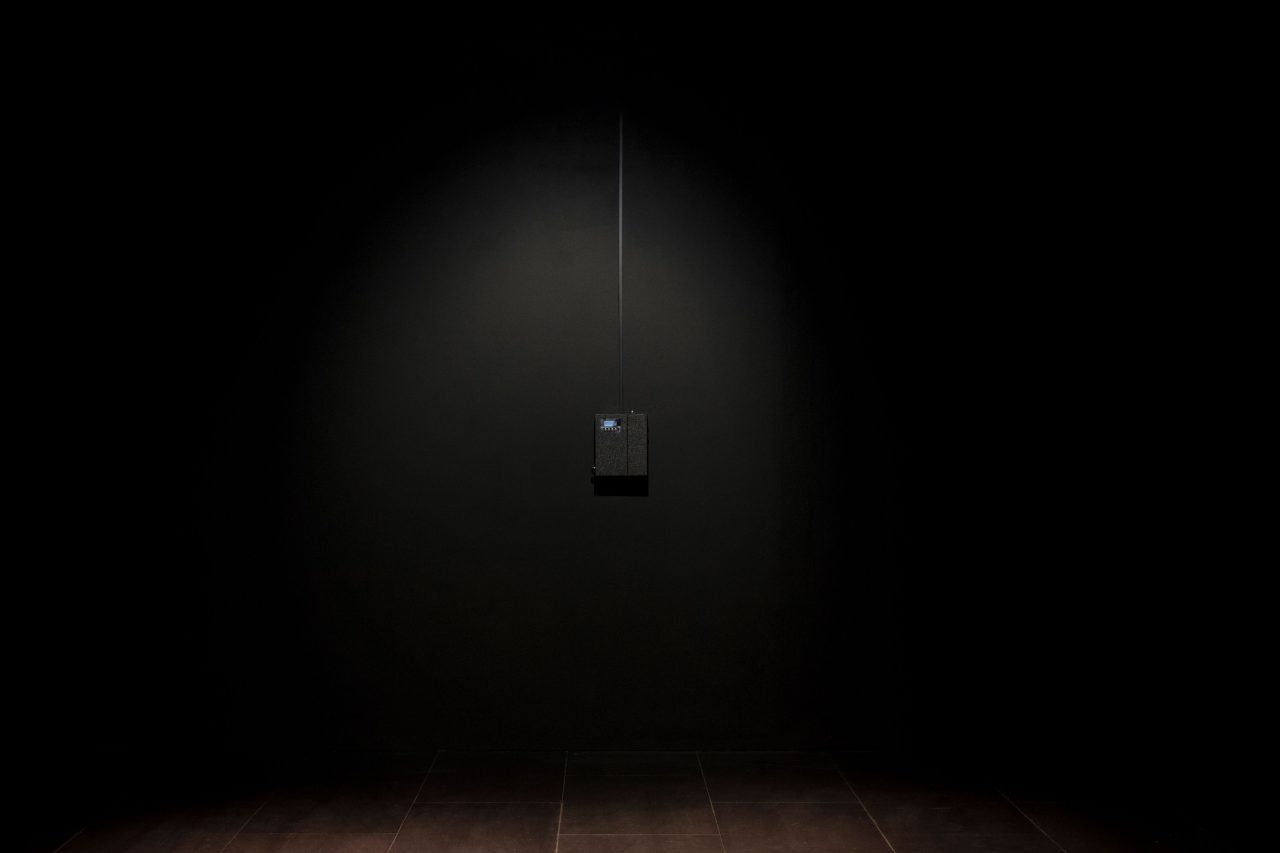
Sylvoxime© (N-[4-(1-ethoxyethenyl)-3,3,5,5tetramethylcyclohexylidene]hydroxylamine), 2019
Image courtesy of the artist and Empty Gallery.
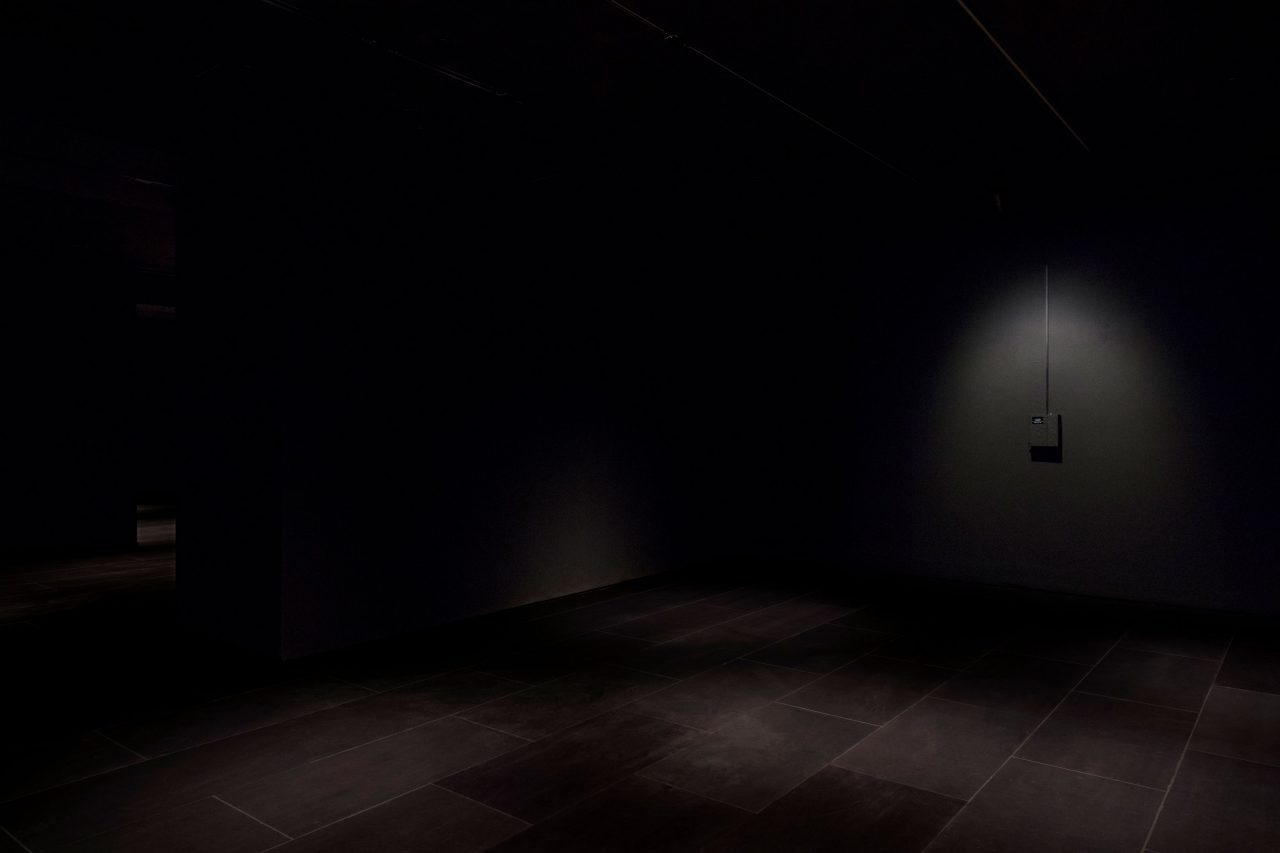
Hyperflor© (2-benzyl-1,3-dioxan-5-one), 2018 – 2019
Image courtesy of the artist and Empty Gallery.
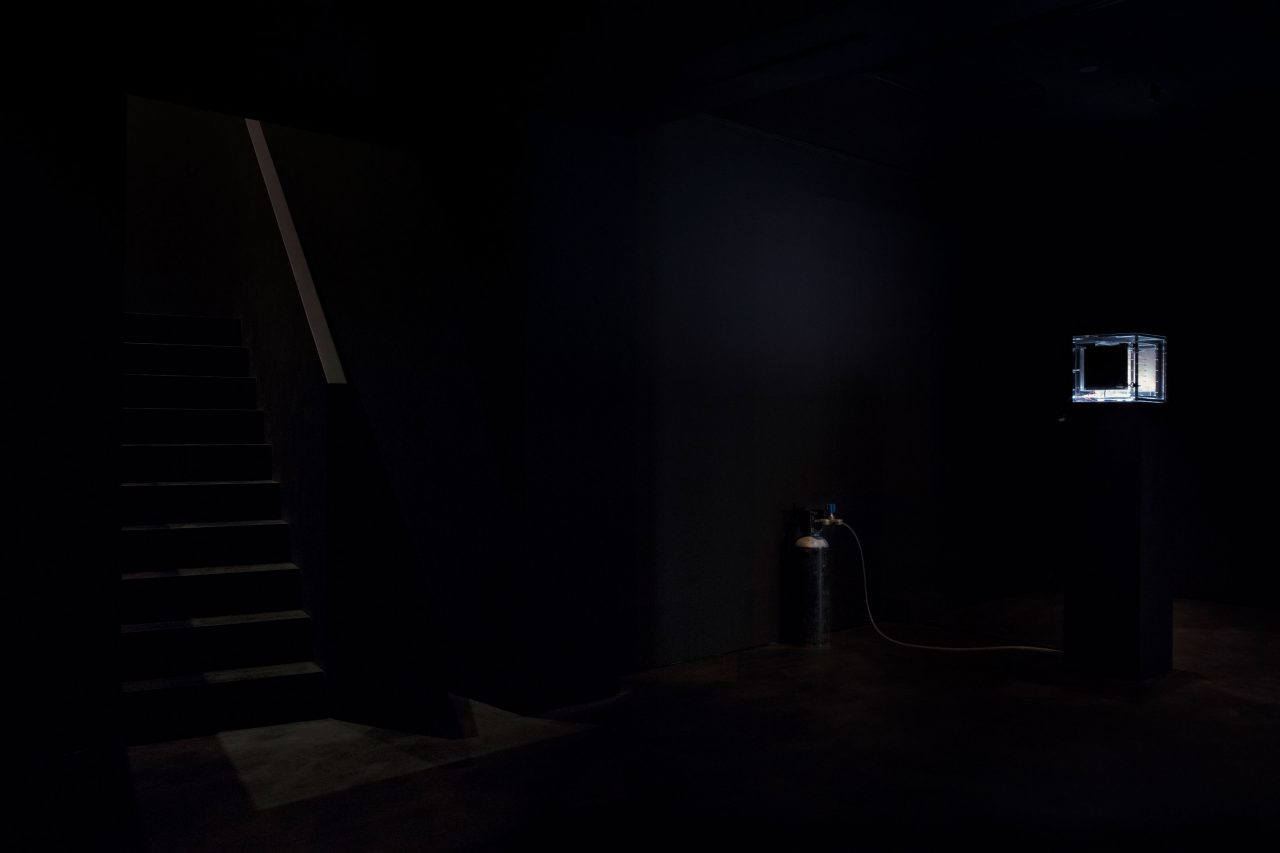
Screen (EP1.1 iPSCs stem cell line-derived human retinal organoids), 2018 – 2019
Image courtesy of the artist and Empty Gallery.
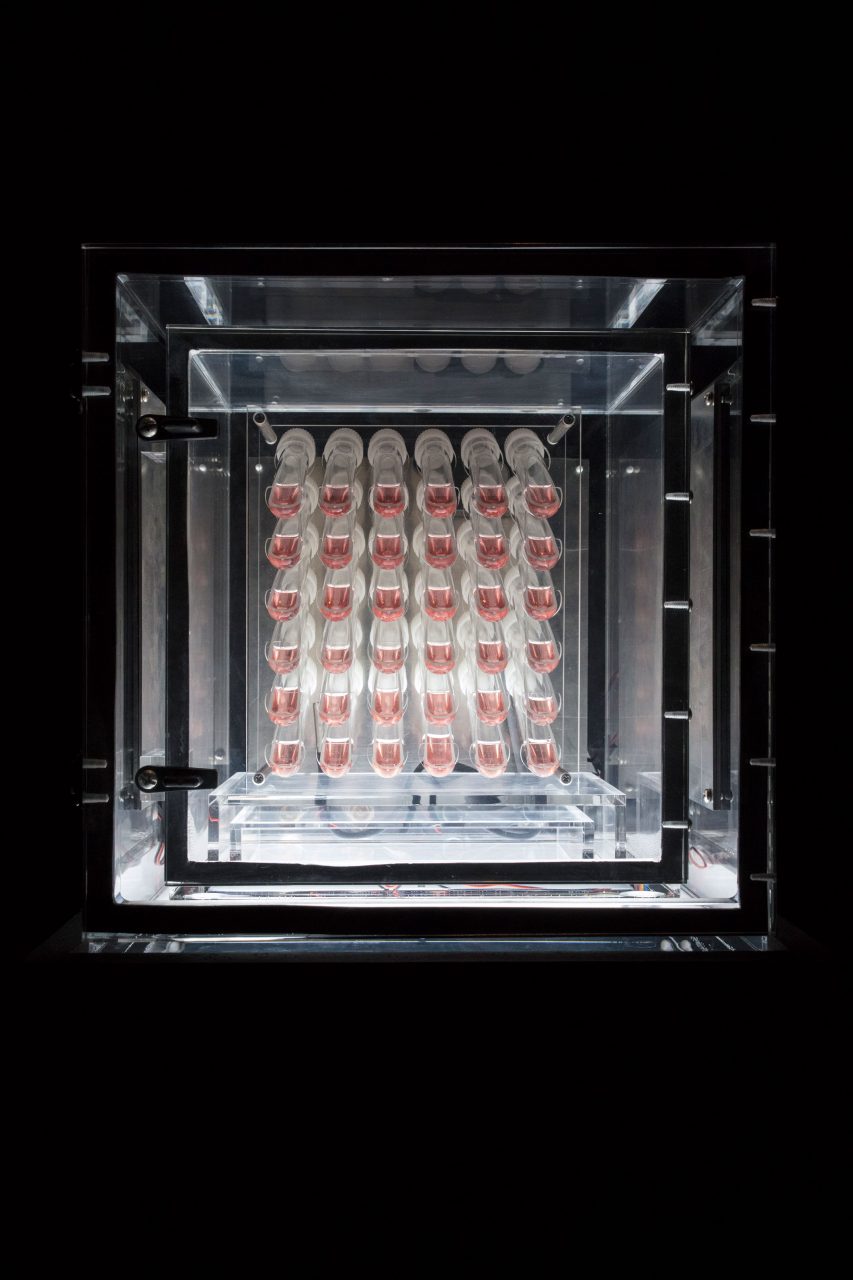
Screen (EP1.1 iPSCs stem cell line-derived human retinal organoids), 2018 – 2019
Image courtesy of the artist and Empty Gallery.
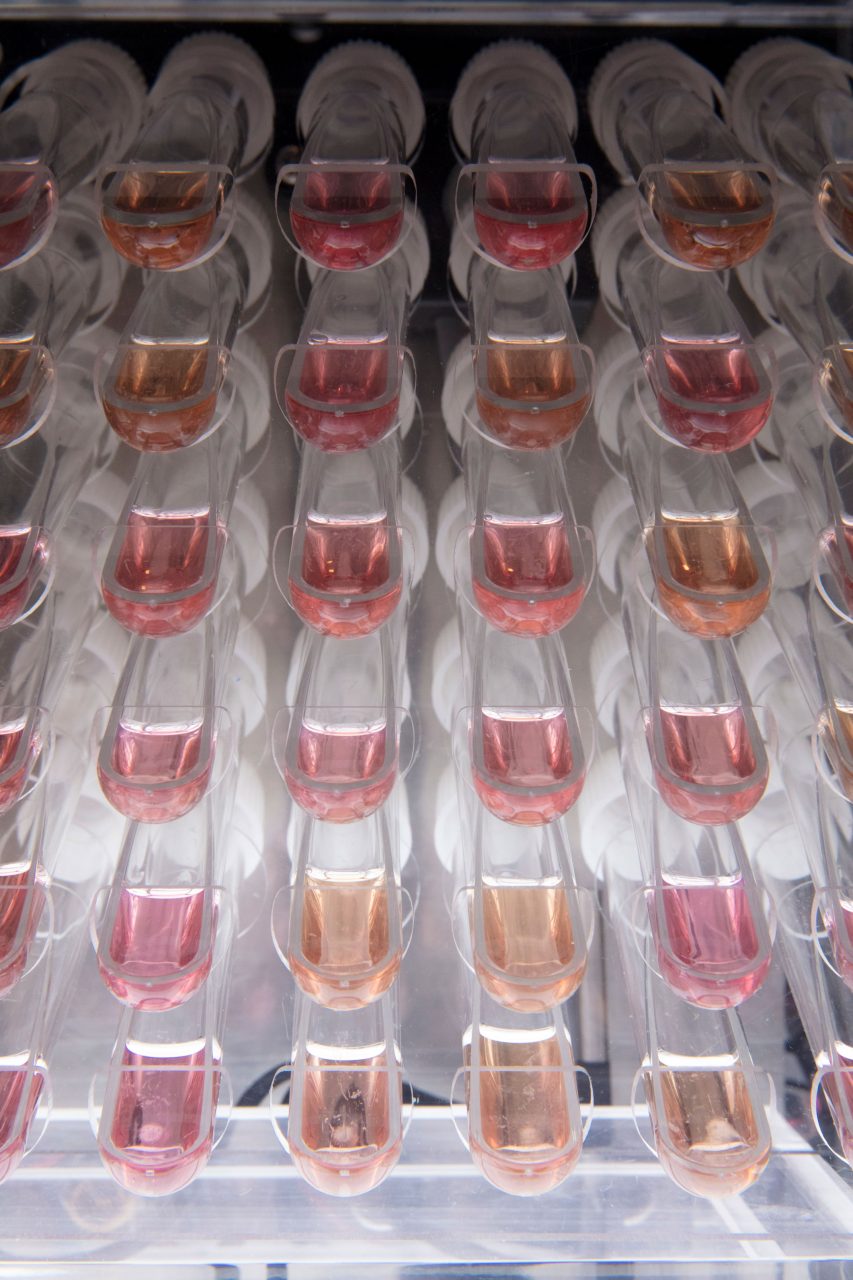
Detail of Screen (EP1.1 iPSCs stem cell line-derived human retinal organoids), 2018 – 2019
Image courtesy of the artist and Empty Gallery.
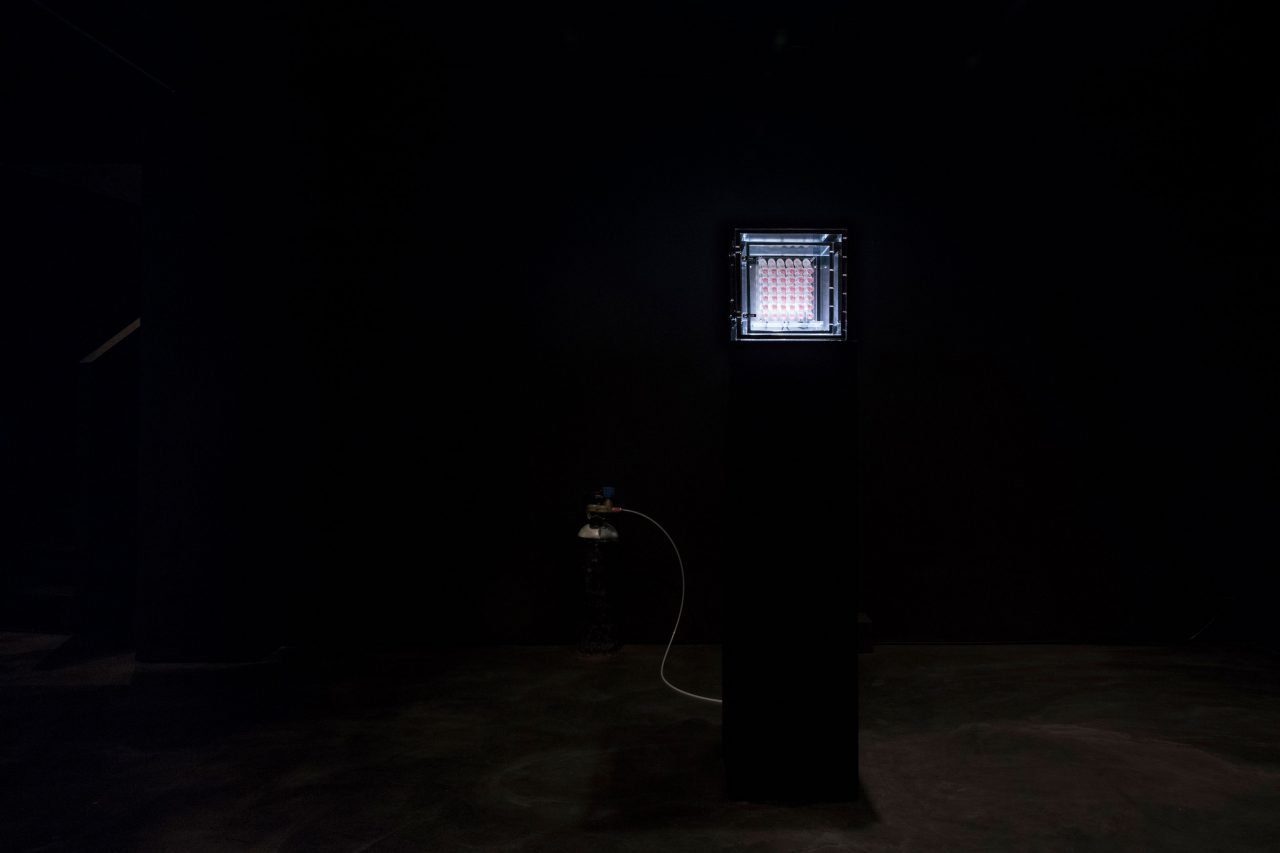
Installation View
Image courtesy of the artist and Empty Gallery.
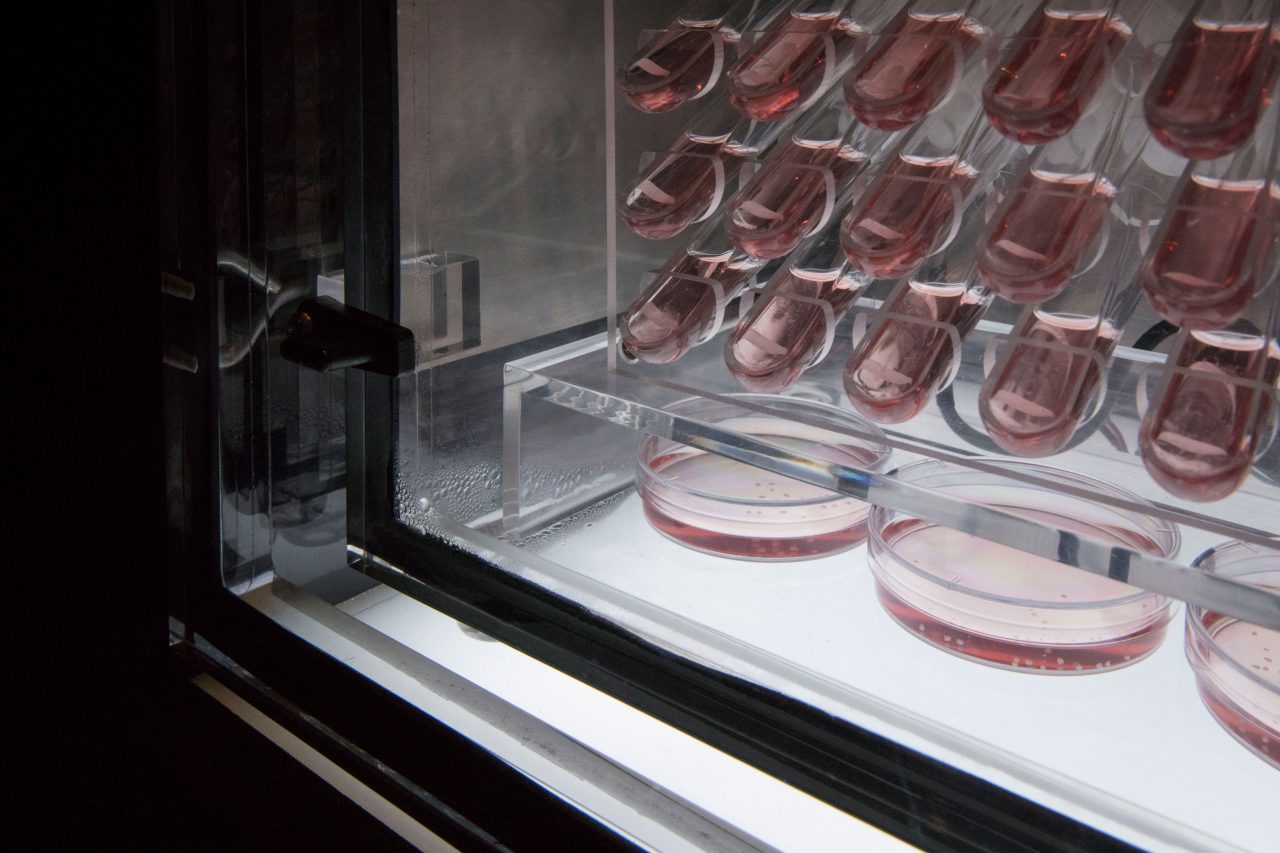
Detail of Screen (EP1.1 iPSCs stem cell line-derived human retinal organoids), 2018 – 2019
Image courtesy of the artist and Empty Gallery.
Empty Gallery is pleased to present Sean Raspet’s first solo exhibition in Hong Kong, New Molecules & Stem Cell Retinoid Screen. Raspet’s practice explores the registration, circulation, and translation of matter within such anthropocentric systems as the economic, legal, and scientific spheres. Probing the epistemological and perceptual slippages which occur when concrete material phenomena are abstracted into the realm of formalized notation, recent output has most often taken the form of ephemeral artworks like artificial flavors, fragrances, and proprietary nutritional supplements. These works are presented in an art-world context while simultaneously functioning as speculative commodities intended for further commercialization. Through the use of aesthetic substrates which are consumed, ingested, or otherwise absorbed by the spectator – ultimately becoming part of their own body – Raspet seeks to provoke a critical re-evaluation of the received categories of “natural” and “artificial” which condition the popular imagination – and by extension, our collective horizon of political possibility.
On the 19th floor, Raspet will present three new fragrance molecules developed specifically for this exhibition: “Fructaplex©”, “Sylvoxime©”, “Hyperflor©”. Designed by him and synthesized with the help of chemist Shengping Zheng’s laboratory at CUNY Hunter College, each scent represents an aesthetically and scientifically novel molecule which has not previously existed in the natural or industrial world. Raspet has taken the additional step of filing provisional patents for each fragrance, which if approved, would render them what the industry terms “captive molecules” – proprietary molecules which may only be used by the patent holder (or licensee). These molecules may take on a life far beyond the framework of the exhibition space by being incorporated into one of the countless mass-produced consumables containing fragrance components – perfume, laundry detergent, dish soap, towels – which we use every day. These synthetic fragrances are diffused into the gallery via electronic dispensers, saturating each discrete area of the space with a different artificial scent. Eschewing the visible for the olfactory, Raspet immerses the spectator within an air-borne mass of proprietary molecules which become legible as “scents” only when they are inhaled by the spectator and decoded by their olfactory receptors. These mobile and formless works nevertheless enact a certain kind of spatial (and perceptual) territorialization which can be read as sculptural.
On the lower floor, Raspet presents a single sculpture entitled Screen (EP1.1 iPSCs stem cell line-derived human retinal organoids), which was created in collaboration with scientist Kiara Eldred at Johns Hopkins University. Appearing at first glance as a transparent quasi-minimalist cube, the work in fact consists of a grid of living retinal organoids – human stem-cells which have been coaxed from an undifferentiated or “pluripotent” state into developing ocular cells – housed within a specialized incubator enclosure. This enclosure is necessary for the survival of the cells and supplies them with a steady stream of medical-grade CO2 whilst also insulating them from environmental pathogens; it also formally mirrors the structure of an electronic screen, with the rows of organoids – containing cone receptors for red, green, and blue wavelengths – organized into a grid which recalls the pixel system. With proper maintenance, these organoids will continue to grow during the course of the exhibition following a developmental sequence which is similar to that of a human zygote. In their mature form, they will be technically capable of receiving optical stimuli from the surrounding environment – allowing them to “see” the exhibition spectator. Screen (EP1.1 iPSCs stem cell line- derived human retinal organoids) thus enacts a radical inversion of the traditional dynamics associated with viewership – whether of electronic displays or of artworks. Instead of positing an active spectator who apprehends an essentially passive object, Raspet endows the artwork with the ability to return our gaze – challenging us to recognize the inherent agency of matter.
Sean Raspet (b. 1981)’s works have often consisted of liquid chemical formulations of artificial flavor and fragrance molecules. More recently his works have involved food, nutrition, human metabolism and human cellular development via stem cells. He is a flavor and fragrance chemist and co-founder of the algae-based food company Nonfood. His practice prioritizes movement away from the specialized art economy, in favor of endeavors that circulate in the economy-at-large, utilizing prevailing modes of production––such as mass-produced products and proprietary molecular structures.
Raspet’s work has been exhibited at the The Artist’s Institute, New York, Museum of Contemporary Art, Chicago; Museum of Contemporary Art, Detroit; de Young Museum, San Francisco; Jessica Silverman Gallery, San Francisco; M Woods Museum, Bejing; Societé, Berlin; the 9th Berlin Biennale; Bridget Donahue, New York; SculptureCenter, New York; and The Kitchen, New York, among others. He lives and works in Detroit and Los Angeles.
Special thanks to: